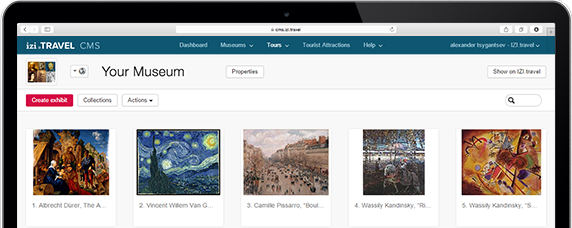音频游览 Impressionist Paintings
- 下载的应用程序!
- iOS
- Android
- Windows Phone
The Clark Art Institute has a rich, colorful history beginning with founder Sterling Clark’s expedition to China in 1908, his introduction to the world of collecting art in Paris in 1910, and his marriage to Francine Clary in 1919. Together, Sterling and Francine began what is now a world-renowned collection of American and European art, including prints and drawings, sculpture, decorative arts, and paintings—most notably French Impressionist masterworks by artists such as Pierre-Auguste Renoir, Edgar Degas, Édouard Manet, Claude Monet, Berthe Morisot, and Camille Pissarro.
In the 1910s and 1920s, when Sterling Clark began collecting European art, Impressionist paintings were becoming increasingly popular with American collectors. Sterling eventually acquired a broad range of works by most of the prominent Impressionists, works that soon formed the heart of his collection. These artists, he felt, had inherited and updated traditional Renaissance painting techniques.
While Sterling and Francine Clark had collected art strictly for pleasure, they were interested in establishing a public art gallery for their collection.Encouraged by a series of conversations with the leaders of Williams College and its art museum, Sterling and Francine Clark first visited Williamstown in the early autumn of 1949. This visit was followed by a warm and friendly correspondence between the leaders at Williams and the Clarks, who resolved to situate their museum within walking distance of the college. A charter for the new Institute was signed on March 14, 1950, just six short months after the Clarks first visited Williamstown.In 1955 the Sterling and Francine Clark Art Institute opened its doors under the guidance of its first director, former silver dealer Peter Guille.
游览停留
-
Onions, Pierre-Auguste Renoir, 1888
-
Apples in a Dish, Pierre-Auguste Renoir
-
Rouen Cathedral, the Façade in Sunlight,Claude Monet, 1892-1894
-
Little Dancer Aged Fourteen, Hilaire-Germain-Edgar Degas, Modeled 1879–81
-
Landscape at Saint-Charles, near Gisors, Sunset,Camille Pissarro, 1891
-
The Geese, Claude Monet, 1874
-
A Box at the Theater (At the Concert), Pierre-Auguste Renoir, 1880
-
Woman With a Fan, Pierre-Auguste Renoir, c.1879
-
Degas, Self Portrait
-
The Loing and the Mills of Moret, Snow Effect
-
Before the Race, Hilaire-Germain-Edgar Degas
-
Dancers in the Classroom, Hilaire-Germain-Edgar Degas
-
Waiting,Henri de Toulouse-Lautrec
-
Jane Avril, Henri de Toulouse-Lautrec
-
Dr. Péan Operating, Henri de Toulouse-Lautrec
-
Portrait of Madame Monet (Madame Claude Monet Reading),Pierre-Auguste Renoir
-
Spring in Giverny, Claude Monet
-
Route de Versailles, Louveciennes, Camille Pissaro 1870
-
Women with a Dog, Pierre Bonnard 1891
-
The Bath, Berthe Morisot 1885-86
-
Recital, Giovanni Boldini c.1884
-
View of Rouen, Claude Monet 1883
-
Man Smoking a Pipe: Portrait of Dr. Gachet, Vincent Van Gogh 1890
-
Sylvie Descamps Monnom, Théo Van Rysselberghe 1900
-
The Visit, Mary Cassatt c.1881
评论
创建您自己的音频之旅!
使用此系统的移动导游应用是免费的


